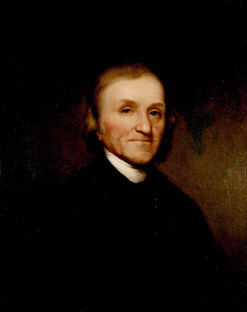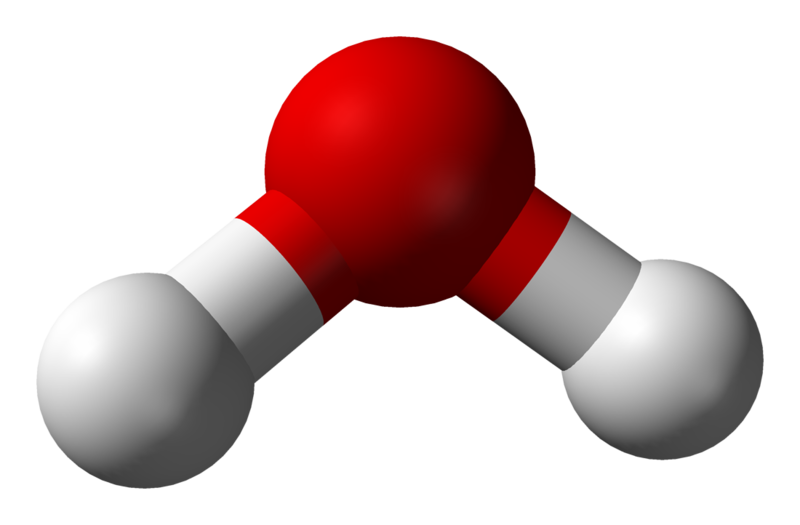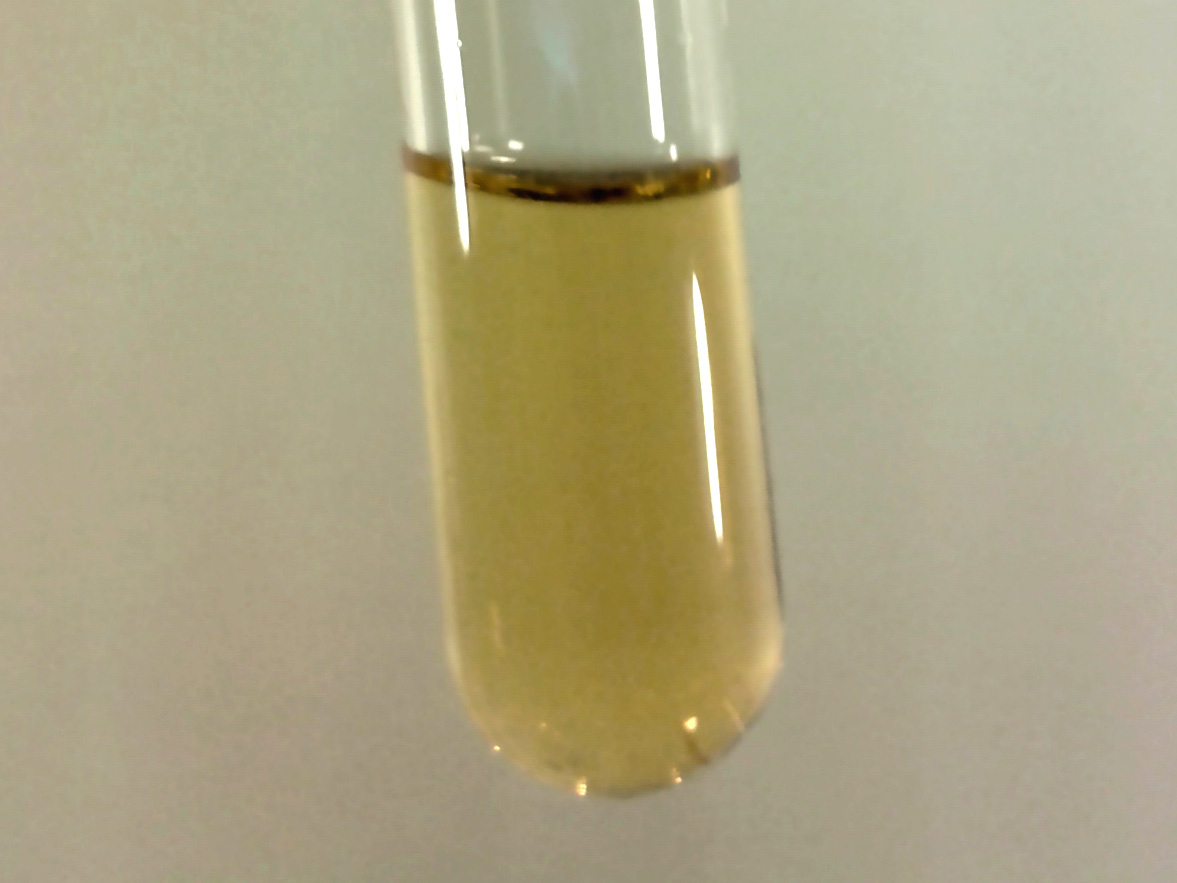Chemistry is fun. Too hard for precise physics (pre quantum computing, see also quantum chemistry), but not too hard for some maths like social sciences.
And it underpins biology.
Much before atoms were thought to be "experimentally real", chemists from the 19th century already used "conceptual atoms" as units for the proportions observed in macroscopic chemical reactions, e.g. . The thing is, there was still the possibility that those proportions were made up of something continuous that for some reason could only combine in the given proportions, so the atoms could only be strictly consider calculatory devices pending further evidence.
Subtle is the Lord by Abraham Pais (1982) chapter 5 "The reality of molecules" has some good mentions. Notably, physicists generally came to believe in atoms earlier than chemists, because the phenomena they were most interested in, e.g. pressure in the ideal gas law, and then Maxwell-Boltzmann statistics just scream atoms more loudly than chemical reactions, as they saw that these phenomena could be explained to some degree by traditional mechanics of little balls.
Confusion around the probabilistic nature of the second law of thermodynamics was also used as a physical counterargument by some. Pais mentions that Wilhelm Ostwald notably argued that the time reversibility of classical mechanics + the second law being a fundamental law of physics (and not just probabilistic, which is the correct hypothesis as we now understand) must imply that atoms are not classic billiard balls, otherwise the second law could be broken.
Pais also mentions that a big "chemical" breakthrough was isomers suggest that atoms exist.
Very direct evidence evidence:
- Brownian motion mathematical analysis in 1908. Brownian motion just makes it too clear that liquids cannot be continuous... if they were, there would obviously be no Brownian motion, full stop.
- X-ray crystallography: it sees crystal latices
Less direct evidence:
- 1874 Isomers suggest that atoms exist
- kinetic theory of gases seems to explain certain phenomena really well
Subtle is the Lord by Abraham Pais (1982) page 40 mentions several methods that Einstein used to "prove" that atoms were real. Perhaps the greatest argument of all is that several unrelated methods give the same estimates of atom size/mass:
- from 1905:
- in light quantum paper
- enabled by experimental work of Wilhelm Pfeffer on producing rigid membranes
- 1911: blueness of the sky and critical opalescence
Subtle is the Lord by Abraham Pais (1982) mentions that this has a good summary of the atomic theory evidence that was present at the time, and which had become basically indisputable at or soon after that date.
On Wikimedia Commons since it is now public domain in most countries: commons.wikimedia.org/w/index.php?title=File:Perrin,_Jean_-_Les_Atomes,_F%C3%A9lix_Alcan,_1913.djvu
An English translation from 1916 by English chemist Dalziel Llewellyn Hammick on the Internet Archive, also on the public domain: archive.org/details/atoms00hammgoog
Subtle is the Lord by Abraham Pais (1982) page 85:so it is quite cool to see that organic chemistry is one of the things that pushed atomic theory forward. Because when you start to observe that isomers has different characteristics, despite identical proportions of atoms, this is really hard to explain without talking about the relative positions of the atoms within molecules!
However, it became increasingly difficult in chemical circles to deny the reality of molecules after 1874, the year in which Jacobus Henricus van't Hoff and Joseph Achille Le Bel independently explained the isomerism of certain organic substances in terms of stereochemical properties of carbon compounds.
TODO: is there anything even more precise that points to atoms in stereoisomers besides just the "two isomers with different properties" thing?
Small microscopic visible particles move randomly around in water.
If water were continuous, this shouldn't happen. Therefore this serves as one important evidence of atomic theory.
The amount it moves also quantitatively matches with the expected properties of water and the floating particles, was was settled in 1905 by Einstein at: investigations on the theory of the Brownian movement by Einstein (1905).
This suggestion that Brownian motion comes from the movement of atoms had been made much before Einstein however, and passed tortuous discussions. Subtle is the Lord by Abraham Pais (1982) page 93 explains it well. There had already been infinite discussion on possible causes of those movements besides atomic theory, and many ideas were rejected as incompatible with observations:The first suggestions of atomic theory were from the 1860s.
Further investigations eliminated such causes as temperature gradients, mechanical disturbances, capillary actions, irradiation of the liquid (as long as the resulting temperature increase can be neglected), and the presence of convection currents within the liquid.
Tiny uniform plastic beads called "microbeads" are the preferred 2019 modern method of doing this: en.wikipedia.org/wiki/Microbead
Original well known observation in 1827 by Brown, with further experiments and interpretation in 1908 by Jean Baptiste Perrin. Possible precursor observation in 1785 by Jan Ingenhousz, not sure why he wasn't credited better.
Observing Brownian motion of micro beads by Forrest Charnock (2016)
Source. Was the first model to explain the Balmer series, notably linking atomic spectra to the Planck constant and therefore to other initial quantum mechanical observations.
This was one of the first major models that just said:
I give up, I can't tie this to classical physics in any way, let's just roll with it, OK?
It still treats electrons as little points spinning around the nucleus, but it makes the non-classical postulate that only certain angular momentums (and therefore energies) are allowed.
Bibliography:
- Inward Bound by Abraham Pais (1988) Chapter 9.e Atomic structure and spectral lines - Niels Bohr
- The Quantum Story by Jim Baggott (2011) Chapter 3 A Little Bit of Reality
Bagic jump between orbitals in the Bohr model. Analogous to the later wave function collapse in the Schrödinger equation.
Refinement of the Bohr model that starts to take quantum angular momentum into account in order to explain missing lines that would have been otherwise observed TODO specific example of such line.
They are not observe because they would violate the conservation of angular momentum.
Introduces the azimuthal quantum number and magnetic quantum number.
This technique is crazy! It allows to both:You actually see discrete peaks at different minute counts on the other end.
- separate gaseous mixtures
- identify gaseous compounds
It is based on how much the gas interacts with the column.
Detection is usually done burning the sample to ionize it when it comes out, and then you measure the current produced.
Gas chromatography by Quick Biochemistry Basics (2019)
Source. The name makes absolutely no sense in modern terms, as nor colors nor light are used directly in the measurements. It is purely historical.
An ion selective electrode is tool used in analytical chemistry used to determine the concentration of a given ion in a solution.
The method can determine the concentration of one ion even if there are multiple different types of ion in the solution, although in some cases this can alter the results. This is done with the help of a selective membrane that only allows certain ions through.
One cool example application mentioned on LibreTexts[ref] is the measurement of fluorine concentration in water. They explain that fluorine is added to the drinking water supply in some countries to help protect people's teeth, and so you want to be able to measure as part of quality control to make sure it is being added in correct the quantities.
The method requires calibrating with calibrating solutions which takes one hour, but once you are calibrated you just stick the sensor into the analyte and get readings in a minute without any expendables. The membrane seems to be a bit fragile which requires care, but overall it looks like a convenient method.
Sample calibration curve for an ion selective electrode
. Source. The curve is simple and log linear, so once you have that it is easy to fit new measurements to the curve.General Principles of Ion Selective Electrodes by Jacob Stewart
. Source. Ion selective electrodes Tech Tips by Vernier
. Source. It seems like a proprietary training video given with the product that this Peruvian university decided to upload to YouTube. Heroes.
Using an Ion Selective Electrode by University of Alberta
. Source. Joseph Priestley in 1801
. Source. The dude was a genius. He went mad later on, but he was a genius, that cannot be debated. He not only founded chemical physics, but then went ton to do structural biology with it.
Bibliography:
- The Eighth Day of Creation has a good summary of Pauling's achievements
Why Linus Pauling was the Smartest Quack in History by MQTate
. Source. 6th edition (1956) on the Internet Archive: archive.org/details/discoveryoftheel002045mbp
The Secrets of the Super Elements
. Source. 2019, by the BBC. Official page: www.bbc.co.uk/programmes/b08rv9r6.Applications:
- because it has an even number of nucleons it is transparent to NMR, and therefore is useful in solvents for NMR spectroscopy
Cody'sLab had a nice 5 video series on making it at home! But the United States Government asked him to take it down as suggested at Video "What's Been Going On With Cody'sLab? by Cody'sLab (2019)" at youtu.be/x1mv0vwb08Y?t=84.
"Water" is the name for both:
- the chemical compound with chemical formula H2O
- the liquid phase of the chemical substance composed of the above chemical compound
Simplified phase diagram of water
. Source. Note the triple point and critical point visible. Phase diagrams are so cool!Phase diagram of water
. Source. Note all the obscure phases of ice.In informal contexts, it usually refers to the phase of ice observed in atmospheric pressure, Ice Ih.
4 K. Enough for to make "low temperature superconductors" like regular metals superconducting, e.g. the superconducting temperature of aluminum if 1.2 K.
Contrast with liquid nitrogen, which is much cheaper but only goes to 77K.
Surprisingly, it can also become a superfluid even though each atom is a fermion! This is because of Cooper pair formation, just like in superconductors, but the transition happens at lower temperatures than superfluid helium-4, which is a boson.
aps.org/publications/apsnews/202110/history.cfm: October 1972: Publication of Discovery of Superfluid Helium-3 contains comments on the seminal paper and a graph which we must steal.
Also sometimes called helium II, in contrast to helium I, which is the non-superfluid liquid helium phase.
Superfluid helium Resonance Experiment by Dietterich Labs (2019)
Source. Buckyballs (C60) by Periodic Videos (2010)
Source. Actually shows them in a lab!- youtu.be/ljF5QhD5hnI?t=167 has a photo of the first effective production method, which passes a large current between two carbon rods
- youtu.be/ljF5QhD5hnI?t=245 and forward cuts (their editing is very annoying) shows how fullerene dissolves in an organic solvent TODO name, sounds like thodium? and produces a violet solution, while graphite doesn't. A Ultrasonic bath is needed for the solution to form however.
- youtu.be/ljF5QhD5hnI?t=501 fullerene is not a good lubricant despite being a little ball, because it is reactive and polymerises under pressure
Endohedral Fullerenes by Dom Burges (2016)
Source. The layered one.
77K. Low enough for "high temperature superconductors" such as yttrium barium copper oxide, but for "low temperature superconductors", you need to go much lower, typically with liquid helium, which is likely much more expensive. TODO by how much?
Where Do You Get Liquid Nitrogen? by The King of Random (2016)
Source. He just goes to a medical gases shop in a local industrial estate and buys 20L for 95 dollars and brings it back on his own Dewar marked 35LD.Making Liquid Nitrogen From Scratch! by Veritasium (2019)
Source. "From scratch" is perhaps a bit clickbaity, but I'll take it.Piezoelectric, and notably used in quartz clock.
Articles were limited to the first 100 out of 285 total. Click here to view all children of Chemistry.








